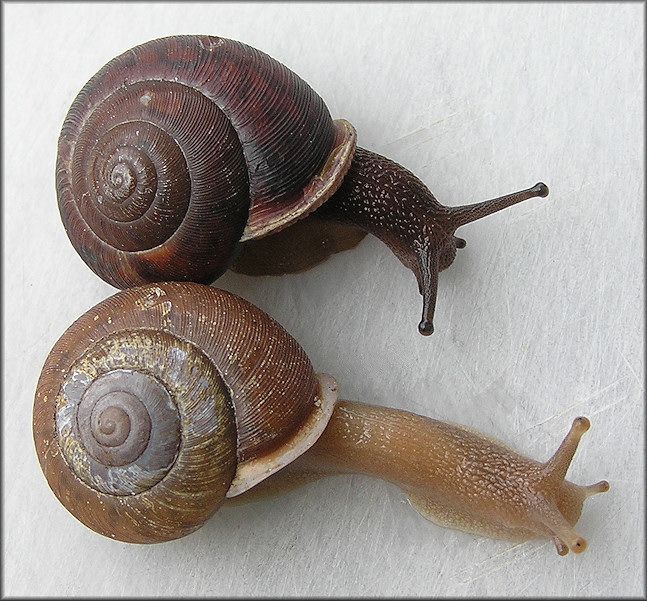Habitat
The Polygyridae family is mostly found in temperate climates. This family is found as far south as the tropics and as far north as Alaska. However, most are woodland snails located in humid areas (Burch, 1962). As displayed on the habitat map below, the Neohelix solemi inhabits the eastern United States, including Maine, Massachusetts, Connecticut, New York, New Jersey, Maryland, Virginia, North Carolina, South Carolina, and Georgia (Discover Life, 2012).
Terrestrial snails require shelter, humidity, and calcium in their soil; therefore, adequate habitats for the snails are restricted (Hickman et al. 2012). The majority of species belonging to the Polygyridae family are found beneath leaves or decaying wood. They also live underneath stones, shale or limestone in particular. However, young snails are located in the open more often, frequently exposing themselves on plants. During rain or at night, the snails often come out from under their hidden location (Pilsbry, 1940). The snails are active during the night and at time of damp weather because they are nocturnal and require mucus in order to move. Mucus is mainly composed of water and the damp conditions decrease evaporation of water (Carnegie Museum of Natural History, 2012).Land snails acquire calcium from both their habitat and diet. In regards to their habitat, a snail is able to absorb calcium through their foot. The calcium found in the soil is supplied by plant debris and the decomposition of bedrock and other substances composed of calcium. The availability of calcium and number of snails in an environment are usually positively correlated (Carnegie Museum of Natural History, 2012).
Continue on to read about adaptations or return home.



